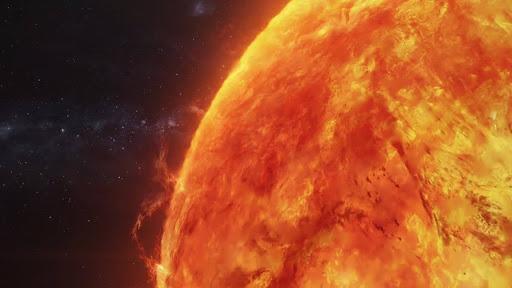
‘Peacock Jets’ on Sun Linked to Magnetic Flux Cancellation
The Sun, our star and the center of our solar system, is a fascinating and complex entity. Despite being a massive ball of hot, glowing gas, it is capable of producing a wide range of dynamic phenomena, from solar flares to coronal mass ejections. Recently, scientists have discovered a new type of solar activity, which they have dubbed “peacock jets”. These jets are recurrent fan-shaped eruptions in the Sun’s lower atmosphere, and they are powered by a process called magnetic flux cancellation.
Magnetic flux cancellation occurs when opposing magnetic fields, which are generated by the Sun’s internal dynamics, come into contact and cancel each other out. This process releases a huge amount of energy, which is then channeled into the formation of peacock jets. These jets are characterized by their distinctive fan-shaped appearance, with the base of the jet being anchored to the Sun’s surface and the top of the jet extending out into space.
The discovery of peacock jets is significant because it provides a deeper understanding of the dynamics of the Sun’s magnetic field. The Sun’s magnetic field is responsible for many of the solar phenomena that we observe, from sunspots to solar flares. By studying the way that the magnetic field behaves, scientists can gain insights into the underlying processes that drive these phenomena.
The research that led to the discovery of peacock jets was conducted by a team of scientists from the Indian Institute of Science Education and Research (IISER) in Pune, India. The team used a combination of observations from NASA’s Solar Dynamics Observatory (SDO) and computer simulations to study the formation and behavior of peacock jets.
The team’s findings were published in a paper titled “Magnetic breaking and reconnection cause familiar fan-shaped solar jets” in the journal Nature Communications. The paper presents a detailed analysis of the observations and simulations, and it provides a comprehensive understanding of the processes that drive the formation of peacock jets.
One of the key findings of the study is that peacock jets are powered by magnetic flux cancellation. This process occurs when the magnetic field lines in the Sun’s lower atmosphere become stressed and eventually break, releasing a huge amount of energy. The energy is then channeled into the formation of peacock jets, which are characterized by their distinctive fan-shaped appearance.
The study also found that peacock jets are a common occurrence on the Sun, and they are observed in many different parts of the Sun’s surface. The jets are typically several thousand kilometers long, and they can be seen extending out into space from the Sun’s surface.
The discovery of peacock jets is significant because it provides a deeper understanding of the dynamics of the Sun’s magnetic field. The Sun’s magnetic field is responsible for many of the solar phenomena that we observe, from sunspots to solar flares. By studying the way that the magnetic field behaves, scientists can gain insights into the underlying processes that drive these phenomena.
The study of peacock jets also has important implications for our understanding of space weather. Space weather refers to the dynamic and variable conditions in the solar wind and the Earth’s magnetic field, which can affect the performance and reliability of our technological systems. By studying the way that peacock jets interact with the solar wind, scientists can gain insights into the underlying processes that drive space weather.
The research on peacock jets is also important for our understanding of the Sun’s internal dynamics. The Sun’s internal dynamics are responsible for many of the solar phenomena that we observe, from sunspots to solar flares. By studying the way that the Sun’s internal dynamics affect the formation of peacock jets, scientists can gain insights into the underlying processes that drive these phenomena.
In conclusion, the discovery of peacock jets on the Sun is a significant finding that provides a deeper understanding of the dynamics of the Sun’s magnetic field. The study of peacock jets is important for our understanding of space weather and the Sun’s internal dynamics. By studying the way that peacock jets interact with the solar wind and the Sun’s internal dynamics, scientists can gain insights into the underlying processes that drive these phenomena.
Source:






